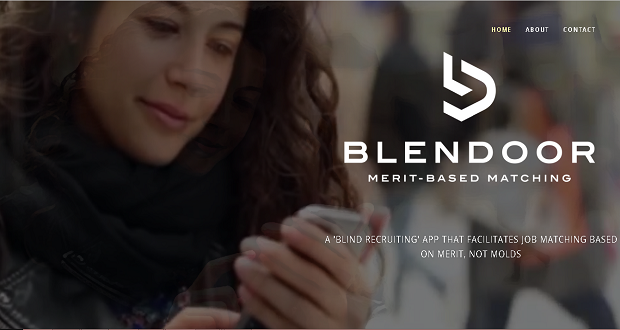In my experience, there are two ways that most Americans tend to respond when they find out you are Native: invisibility or extreme romanticizing.
Due to the widespread myth of the “vanishing race,” many people react to Indigenous people in disbelief, as if seeing a living, breathing dinosaur. This disbelief often results in some sort of blatant or unintended invalidation. From insisting that you do not “look Native” to assertions of a Cherokee grandmother, there are countless examples and no matter how often you hear them, they continue to be jarring.
Due to the widespread myth of the 'vanishing race,' many people react to Indigenous people in disbelief, as if seeing a living, breathing dinosaur. Click To TweetThe rest of the population becomes ridiculously enamored, commenting on how they admire your “closeness to nature.” I am typically left wondering what led them to believe I got ready in the wild that day: my exceptional makeup skills or my four-inch heels?
This has been my experience working in most organizations if I dare allude to the identities I hold or show up in a piece of hand-beaded jewelry. However, I fully recognize that my level of racial fatigue pales in comparison to those who cannot pass as white, as I am from a mixed background, being both white and an enrolled member of a state-recognized tribal community. I have spent most of my career working in higher education and have seen first-hand the impact on marginalized individuals when diversity, equity and inclusion fall short in the workplace. Your place of employment can feel unwelcoming at best; hostile and exhausting at worst.
In addition to the stereotypes, microaggressions and sometimes blatant racism that marginalized professionals face, they also carry an additional burden: the minority tax. The minority tax is a concept often used in higher education settings, but which also shows up in other types of organizations striving to increase diversity and inclusion initiatives. This concept refers to the additional duties placed on professionals who are part of marginalized groups to achieve DEI goals. Make no mistake: many are asked to serve on every diversity committee across the organization as the token Native, Black, LGBTQ, Asian or Latinx person. While it is extremely important to center their perspectives in this work, a lack of diversity within an organization means that a few people carry the weight of facilitating change.
When DEI work is not directly tied to the position employees were hired for, it most often becomes unpaid labor while also taking a significant amount of time and energy. This all-too-common scenario can lead to feelings of tokenization, quick burnout and decreased productivity in areas directly related to their position and career advancement. In higher education, for instance, an assistant professor who is up against a tenure clock may not make steady progress towards publication requirements due to the extra work they take on across campus. If they manage to do both, something in their life will inevitably suffer, such as work-life balance and time spent with family.
When DEI work is not what employees were hired for, it becomes unpaid labor. This leads to tokenization, burnout and decreased productivity in areas directly related to their position and career advancement. Click To TweetAs one might predict, this experience has a significant impact on an organization’s ability to retain diverse employees. Research also indicates that this phenomenon is complicated, as many underrepresented professionals take on this work willingly. It may be a personal passion or something they regard as giving back to their own identity group or community. As Virginia Gewin (2020) wrote for Nature, the problem is that folks are neither compensated nor recognized for this type or work. Compensation could be monetary, but it could also come in the form of time. However, this is rarely the case. Primary duties are not typically reduced to balance the workload; and individuals are asked to serve in various diversity capacities in addition to their regular duties. At the same time, this work fails to be counted towards promotion or any kind of achievement that serves the employee.
Very recently, I read through quite the heated argument that occurred on LinkedIn. A white, male professional was chastising a woman of color for insisting on compensation related to organizational service and speaking engagements. He argued that service should be given freely and that she should be ashamed of her demands. However, it was quite clear that he had no personal understanding of the degree of labor she took on — labor that made her company look good while offering her nothing in return. If we would not expect white men to work for free or take on additional labor without some trade-offs, why then do we expect this of people of color and women? At a minimum, we should be considering the following when it comes to the minority tax and advancing DEI within organizations:
If we would not expect white men to work for free or take on additional labor without some trade-offs, why then do we expect this of people of color and women? Click To Tweet
- While representational diversity alone falls short of any kind of inclusion, equity or racial justice, it is an important start so that this type of labor is not placed on a few individuals.
- Understand that people who hold marginalized identities should not be carrying out this work alone. Dominant group individuals, white people and men should be equally invested in DEI. If, for instance, you are a white ally, take stock of the additional labor your Black and Brown counterparts are engaged in. Tap in and ask how you can help or get involved.
- Create policies that value and reward diversity, equity and inclusion work. Recognize that we cannot simply state that we value DEI if we are not valuing the time and energy that goes into facilitating positive change. This can look like bonuses, stipends, or additional compensation. However, it can also simply mean removing other duties from an individual’s plate to make time for DEI work. Additionally, accomplishments and labor related to diversity, equity and inclusion should be fully considered in employee evaluations for things like promotion, tenure, raises and career advancement.
- Respect employees’ time and boundaries if someone elects to decline an invitation. Recognize this as an act of self-preservation and self-care.
- Consider the impact. Make sure there are clear and measurable goals associated with any new initiative before asking marginalized employees to participate. We do not need to create more work for people if the result is merely performative.
- Finally, regarding organizational climates, take responsibility for your own learning and cultural competency. Stop depending solely on marginalized people to educate when so many resources are readily available.





















This is an excellent article that I have shared and re-read a few different times. Being an indigenous professional is especially hard given the under representation of us throughout non tribal entities. These are all very relevant points in which organizations should take into account when managing DEI work. Thanks for sharing!